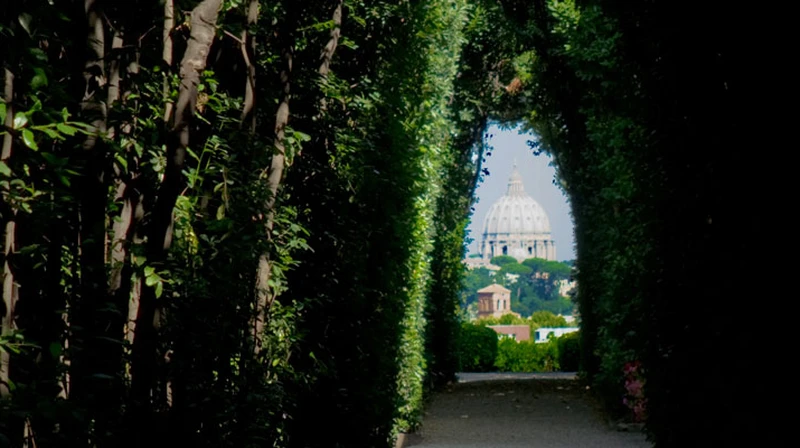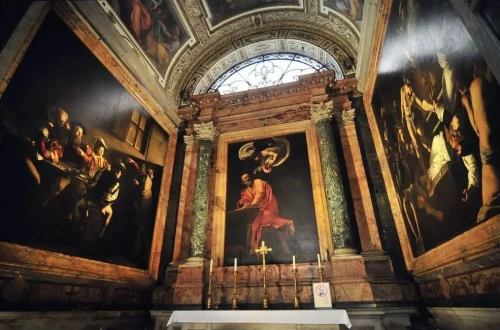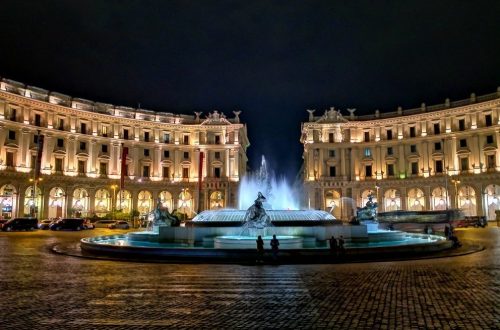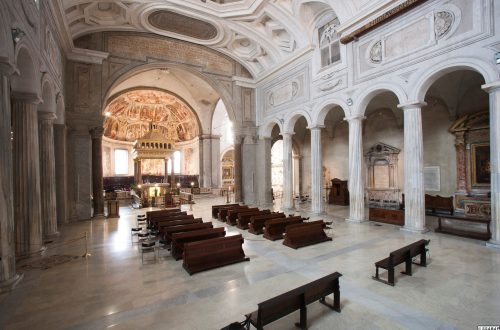
The keyhole of the Knights of Malta
The square of the Knights of Malta, with its empty appearance, is surrounded by trees and a wall decorated with obelisks and military trophies. It was designed in 1765 by Giovan Battista Piranesi, hired by Pope Clement XIII’s nephew, Giovanni Battista Rezzonico, prior of the Knights of Malta (a fact mentioned in an inscription framed by two small obelisks).
The keyhole of the Knights of Malta is a hidden place shrouded in mystery that offers one of the most unexpected and unusual sights in Rome, the most curious can find it by engaging in an exciting treasure hunt among alleys, squares and monuments, for the lazy and everyone else will just need to continue reading the rest of this article.
The Keyhole of Rome is a magical peephole open on the always closed green door of the Priory of the Knights of Malta on the Aventine Hill. Placing your good eye on it means finding the perfect view of St. Peter’s Basilica and admiring a unique perspective on the dome. framed by a row of lined trees.
This stunning telescopic view of St Peter’s dome appears as a framed illusion at the end of a driveway perfectly framed by a curved pergola of trees in the Priory garden.
A popular perspective can be seen through the lock of the door leading to the Grand Priory of the Order of Malta, at number 3 (where people usually line up). We can see the dome of St. Peter in the center of a perspective created by the gallery formed by an alley of trees and plants, cut specifically for this purpose.
The religious complex was built in 939 as a Benedictine monastery, with a church dedicated to Saint Basil. Towards the end of the 12th century, the Templars became owners of the monastery. These warrior monks had as their first mission to ensure the journey of pilgrims to the Holy Land, where they fought the Muslims there. With the suppression of the Templar order, the Knights of Rhodes settled there (whose role was to help pilgrims traveling to the Holy Land). Their name changed to the Knights of Malta in the 16th century.
Giovan Battista Piranesi also designed the new facade of the Church of San Basilio, renamed Santa Maria del Priorato. On this, two pairs of fluted pillars, decorated with sword reliefs, support the capitals with the Rezzonico coat of arms. A Maltese cross dominates the large tympanum which bears the coat of arms of the Order. The interior contains tombs, including that of the humanist Baldassarre Spinelli in a Roman sarcophagus from the 3rd century AD. or that of G. Piranesi where the statue of him represents him with a Roman toga.
Piranesi, apparently an admirer of the Templar Order, would have spread many symbols and references in the architecture and decoration of the place. These provisions would be inspired by the legend according to which the Aventine hill was a sacred ship for the Templars, ready to set sail for the Holy Land. The south of the hill would be the bow of the nave, and various architectural elements of the square and the Priory would symbolize parts of the ship.
On the obelisks, some esoteric-type symbols have been interpreted by some, including freemasons, as messages intended for those who know how to decipher them. The square of the Knights of Malta, with its empty appearance, is surrounded by trees and a decorated wall with obelisks and military trophies. It was designed in 1765 by Giovan Battista Piranesi, hired by Pope Clement XIII’s nephew, Giovanni Battista Rezzonico, prior of the Knights of Malta (a fact mentioned in an inscription framed by two small obelisks).
![]()




